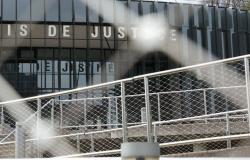Just outside Kenitra, the Sakina forest in Morocco attracts thousands of visitors every day, but this popularity poses a major challenge in terms of fire safety.
The Sakina forest, located on the outskirts of Kénitra, 45 kilometers north of Rabat, is a popular destination for families for their picnics. They take advantage of the shade of the trees to organize barbecues in the afternoon, thus escaping the summer heat.
This 150-hectare park regularly attracts between 5,000 and 10,000 visitors per day, the majority of whom bring a meal to cook outdoors. However, this growing popularity poses a major challenge in terms of fire safety.
Ahmed Araba, forest ranger of the Sakina forest, expresses his concern: “The first problem we encounter in this urban park is fire, especially during the summer season. We have a problem with new visitors who bring their raw food to cook. When they arrive at the park, they dig holes and light fires, which constitutes a danger for trees.”
Faced with this threat, theNational Agency for Water and Forests (ANEF) is intensifying its fire safety awareness efforts among visitors. Moroccan forests become extremely flammable during the summer due to increasing temperatures, decreasing air humidity and the onset of dry, hot winds. A moment of inattention can cause a devastating fire.
Firefighters, rangers and ANEF staff members work to inform visitors by distributing brochures on fire prevention. And the efforts are bearing fruit. Said Tawil, a visitor, understood the message well: “If I visit another forest and come across someone lighting a fire next to a tree, I will advise them not to do so so as not to harm the tree and themselves. We must protect the forest because it is our mother.”
Another visitor, Youssef El Guerch, chose not to cook food during his outings: “To avoid the danger of forest fires, I avoid bringing with me any flammable materials such as charcoal or gas cylinders. I avoid all problems by bringing ready food from home.”
The ANEF statistics speak for themselves. In 2023, 466 fires were recorded, affecting 6,426 hectares, while the area burned the previous year reached 22,760 hectares. Mostafa Salah Benramel, climate expert and president of the environmental NGO Association Écologique des Minarets pour le Climat et le Développement, attributes recent droughts to El Niño phenomenon : “There is the El Niño phenomenon which contributes to the increase in temperatures during all seasons and also to the reduction in precipitation which makes plants very dry. The smallest spark resulting from human activity sets off fires with catastrophic consequences .”
El Niño, a natural and temporary warming of part of the Pacific, changes global weather patterns. Studies indicate that with global warming, these phenomena could become more powerful.
However, ANEF managed to reduce the area affected by wildfires by 70% in 2023 compared to the previous year. Major Bilal El Yaacoubi, head of the Kenitra zone for forestry development, emphasizes the importance of technology and experience: “We rely on sophisticated means and methods to fight forest fires, including drones that help us precisely locate the Source of the fires, in addition to the fleet of Canadair aircraft. We have the training as well as the “The experience gained from previous fires All these factors help Morocco to succeed in fighting fires and reducing the extent of damaged areas.”
For the year 2024, ANEF has allocated a total budget of 153 million dirhams for the prevention and fight against forest fires. In addition to this budget, Morocco has expanded its fleet of Canadair aircraft specialized in firefighting to seven, with an eighth planned for next year.






